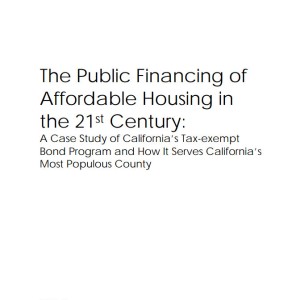
Authors: Molly Rysman
Date: January 1, 2005
Project: [wpv-post-link id=”$project”]
Housing is one of the most important assets to any city or region. Without decent housing, children do not learn, parents cannot hold down jobs, and the physical health of families cannot be maintained. However, as housing markets have boomed, more and more families are shut out of the housing market. For low-income families, this does not simply mean the inability to buy a home. It means the inability to rent a basic apartment. This problem is exacerbated in the urban areas of America where low-income families congregate because of proximity to jobs and services, but where land is scarce and home values are particularly high.
This report examines the government financing of affordable housing in one of the nation’s most robust housing markets: Los Angeles County. California subsidizes the production of affordable multi-family housing through a combination of stateadministered federal programs, voter-approved bonds, and local subsidies. One of the largest sources of funds for affordable housing production in California is tax-exempt bonds. The California Debt Limit Allocation Committee (CDLAC) allocates approximately $1.5 billion per year in tax-exempt bonds for affordable rental housing through the Qualified Residential Rental Projects bond pool. These bonds are used to finance the production of mixed-income and 100% affordable multi-family rental housing. This report examines how these bonds have been utilized in the past and how the bonds have met the need for affordable housing in Los Angeles County, the State’s most populous county.
Link to Publication